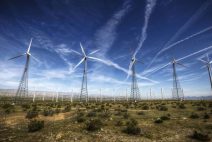World oil demand will rise faster than expected next year, the International Energy Agency (IEA) said, a sign that the outlook for near-term oil use remains robust despite this week's COP28 agreement to transition away from fossil fuels.
Despite the upgrade, there is still a sizeable gap between the IEA, which represents industrialised countries, and producer group OPEC over 2024 demand prospects. The two have clashed in recent years over issues such as long-term demand and the need for investment in new supplies.
World consumption will rise by 1.1 million barrels per day(bpd) in 2024, the Paris-based IEA said in a monthly report, up 130,000 bpd from its previous forecast, citing an improvement in the outlook for the United States and lower oil prices.
The 2024 upward revision reflects "a somewhat improved GDP outlook compared with last month's report," the IEA said. "This applies especially to the U.S. where a soft landing is coming into view."
"Falling oil prices act as an additional boost to oil consumption," it said.
The IEA, which advocates a speedy transition from fossil fuels, also cut its global demand growth forecast for the current quarter by almost 400,000 bpd to 1.93 million bpd due to a worsening economic outlook.
"Europe, Russia and the Middle East account for most of the adjustment," the IEA said. "The impact of higher interest rates is feeding through to the real economy while petrochemical activity shifts increasingly to China, undermining growth elsewhere."
Oil has weakened to a six-month low near $72 a barrel this week, even after OPEC+, which includes OPEC oil-exporting nations and allies such as Russia, on Nov. 30 announced a new round of production cuts for the first quarter of 2024.
Crude was up more than 3% on Thursday after the IEA report was released to trade near $77.



















